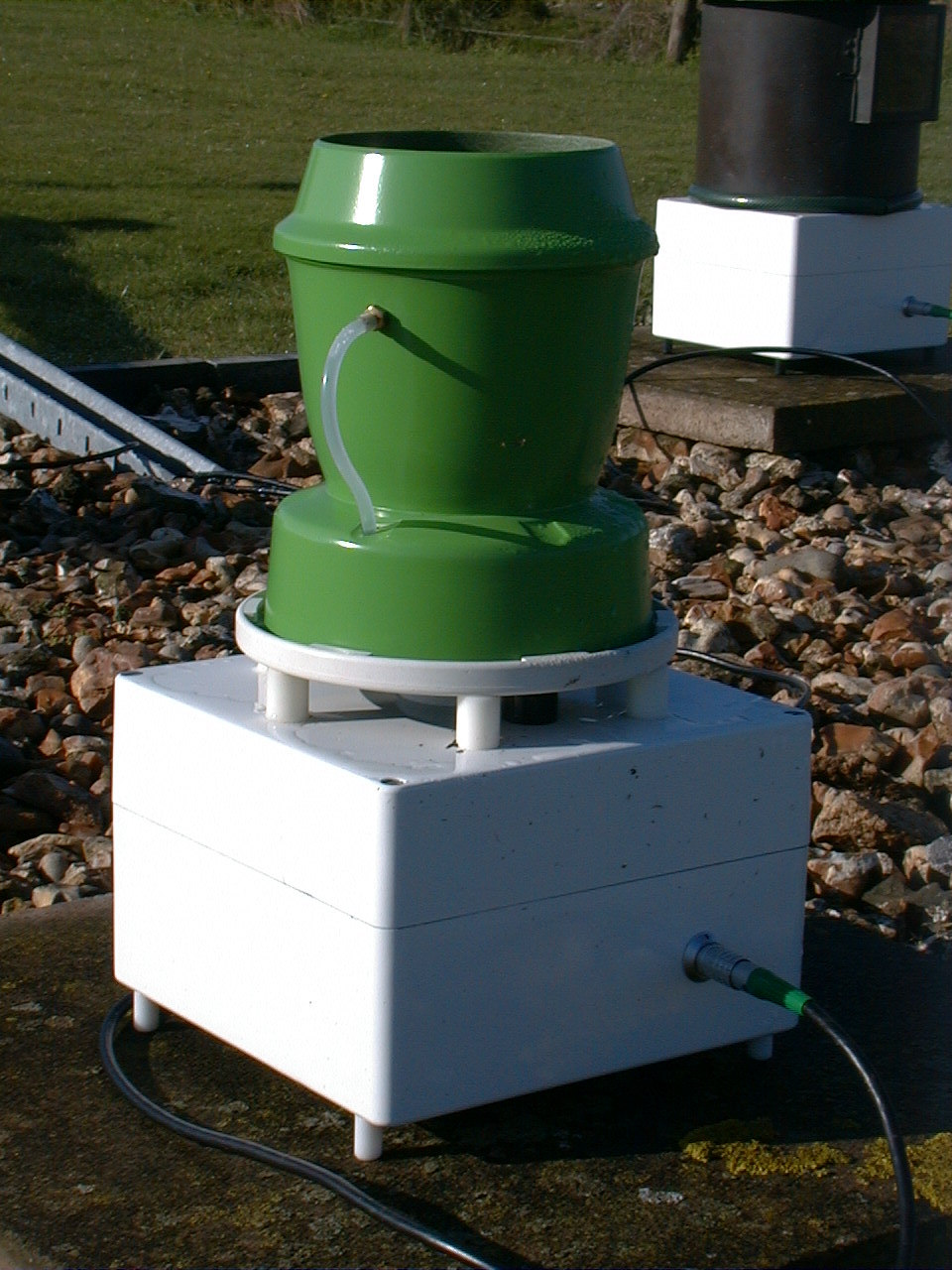

A drop-counting gauge at Chilbolton.
Data are provided from 2 types of raingauge, drop-counting and tipping-bucket, at 2 sites. The tipping-bucket raingauge is a common type of gauge, but it has poor resolution of rain rate. Rapid response drop-counting raingauges have been developed at the Chilbolton Observatory to give measurements of every drop rather than every tip of a bucket at high time resolution: 10 seconds. The BADC dataset also includes data from a low-rate drop-counting gauge at Chilbolton which is the same unit but with a larger collector of 387 cm2 rather than the standard 150 cm2 collector. Data from a standard tipping bucket gauge are also provided at each site. The raingauges operate routinely at Chilbolton, England (51.1445°N, 1.4370°W) and Sparsholt, England (51.0879°N, 1.3914°W), 8 km to the south-east of Chilbolton Observatory.
Two types of data file are available on the BADC: single and multiple raingauge files for Chilbolton and Sparsholt. The single gauge files are from a standard drop-counting gauge placed on the ground at each site, although until June 2004 both Sparsholt gauges were on the roof of a portakabin at the site. As some experimenters may fine it useful to consider the data from further gauges, the Chilbolton multiple gauge files include these data but also have data from a standard drop-counter, a low-rate drop-counter and a standard tipping-bucket gauge. Until September 2004 the 2nd standard drop-counter was on the roof of a portakabin at the site. Since then it has been placed within a circular low turf wall enclosure of 3 m diameter on the ground, which is considered to provide a suitable environment for accurate measurements of rainfall. The wall is 0.45 m high, with steep internal and sloping external sides. The remaining 2 gauges have been on the ground for the duration of the measurements. The Sparsholt multiple gauge files contain standard drop-counter gauge data and tipping-bucket gauge data.
Drop-counting raingauges can measure drops when condensation forms on the collector or when ice melts on it. The low-rate drop-counting gauge is most prone to this effect due to the larger surface area of its collector. For all gauges it is a small effect which appears in the data in the same way as rain with a low rainrate. A decision must be made as to whether to leave these counts in the data. Until end June 2007 counts due to condensation were left in the data. From July 2007 they have been removed. Data from the drop counting raingauges should not be used to derive information about rain at very low rain rates, less than 1 mm/hour.
Drop counting and tipping bucket raingauges do not accurately measure snow or other frozen precipitation, since it cannot be detected until it has melted.Hence data from such events are removed from the data files.
The files are in NetCDF format.
If Chilbolton raingauge data is used in any publication or report then acknowledgement must be given to the Radio Communications Research Unit at the STFC Rutherford Appleton Laboratory for providing the data.
If you have problems obtaining the data, please contact the British Atmospheric Data Centre.